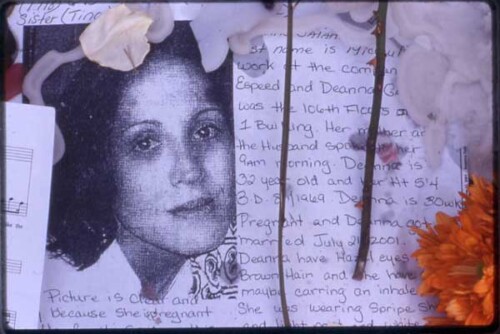The Minnesota Parent-Child Project found that children who experience high levels of developmental stressors and insults in the face of inadequate developmental resources and supports will demonstrate the most negative outcomes. In prisoners’ children, these circumstances lead to school behavior and performance problems, mental health problems and the childhood prototypes of adult criminal behavior—fighting, lying and stealing.1 Children with these behaviors are more likely to experience school failure, associate with antisocial peers, engage in delinquency, and become involved in the juvenile or criminal justice systems.2
Most children of women offenders are at greater disadvantage because they have two parents entangled in the criminal justice system.3 As a result, these children are more likely to have two absent parents and both sides of their family involved in drugs and/or crime. Such circumstances significantly reduce the resources available to support child development.
When Natalia gave birth while incarcerated, the Child Protective Services refused to approve the baby’s placement with Natalia’s 27-year-old sister because the sister had been convicted of trespassing at age 18. The baby was placed with Natalia’s mother, who had initially refused to take her.
Their maternal grandfather Reggie regularly brought the twins to visit with Dominique in ChildSpace. When Reggie failed to renew his visitor permit in a timely manner, he was prohibited from coming into the prison. The ChildSpace Coordinator attempted to find another adult caregiver to bring the babies to visit but none of their local maternal or paternal relatives could be cleared to enter the prison because all had been arrested within the previous 10 years.
It’s important to note that there is no reliable evidence that parental incarceration itself creates negative developmental outcomes among prisoners’ children. About 40% of these children have never lived with their parents who have been incarcerated, and the direct effects of parental crime, arrest and incarceration on their lives are minimal.4 Large-scale studies suggest that the outcomes seen among children of criminal offenders are attributable to the caregiving they receive and childhood experiences their caregiving engenders.5
The Conceptual Basis for the Center’s Work
At the time the Center was founded, few agencies working with children of incarcerated parents had identified a theoretical foundation for their work. It was widely assumed that the children had been in the primary care of their parents prior to parental arrest6 and that the effects of the arrest/incarceration of their parents led to their outcomes,7 but there was no empirical support for those propositions. Theories from the fields of criminology and sociology seemed no better at explaining intergenerational crime and incarceration.
After her arrest, a social worker at the jail told Natalia that it would be better for her baby to go to a foster home after birth. “Your father was a criminal and you learned from him. Now you’ve ended up having a baby in jail,” the worker said to Natalia. “Don’t you think your baby deserves a chance to learn something else?” Natalia told the social worker that she had never lived with her father and had learned almost nothing from him.
Originally housed at and influenced by the approach of Pacific Oaks College, an upper division and graduate institution in Pasadena, California specializing in child development and early childhood education, the Center chose to ground its work in developmental and specifically attachment theory. Applied to criminal justice populations, these theories have improved our understanding of the outcomes seen among prisoners’ children, including intergenerational crime, arrest and/or incarceration. We have applied the following concepts to our work:
- Development occurs through successive adaptations to the environment.8 At each stage of development, developmental outcomes are the result of children’s cumulative history plus the effects of current challenges and supports.9 This means that children’s experiences are highly important and have lasting developmental significance.
- Among the most critical experiences in development is the primary attachment relationship between infant and caregiver, usually the mother. Early attachment is categorized by the way infants organize their attachment behaviors; these categories are reflected in children’s developmental pathways from birth through adulthood.10
- An infant’s capacity for attachment at one-year can be predicted prior to birth from the mother’s state of mind with respect to her own primary attachment relationships in childhood.11 Children’s later developmental outcomes can be predicted from their primary attachment experiences, the quality of later care they receive from their caregivers, the context of that care (i.e. stressors and supports experienced by the caregivers) and the quality of the children’s relationships with peers.12 While emerging issues at each stage of development offer the possibility that outcomes can be changed, a child’s early relationships and continuing care are most significant in determining who the child becomes.
- The developmental process is characterized by the interplay of children’s experience and their representations (“working models”) of that experience. Children’s representations of their experience guide their future expectations.13 For example, from their earliest experiences with primary caregivers, children develop “working models” of how humans function in relation to one another; these models then guide children’s future expectations of themselves and others in relationships.
- Parents’ “state of mind with respect to attachment,” or internal working models, can be changed by healthy, appropriate relationships with other adults.14 In addition, their ability to provide responsive care for their children can be improved by reducing parent stressors and providing parent support.15
Applying a developmental perspective that included many of these principles, the Center conducted a series of research projects examining the lives and experiences of the children of criminal offenders in the communities where they lived.16 These investigations produced different information than most previous studies on children of incarcerated parents, finding the major influences in the lives of the children of criminal offenders to be: 1) an inadequate quality of care, largely due to the effects of poverty; 2) a lack of emotional and material supports, due to high levels of family stress; and 3) traumatic experiences. We did not find parental incarceration to be a critical or distinguishing feature of these children’s lives.
The findings of this research were and continue to be consistent with both developmental theory and the experience of Center practitioners with their clients.
- D.P. Farrington, “Early Predictors of Adolescent Aggression and Adult Violence,” Violence and Victims 4 (1989): 79-100; S. Friedman and T.C. Esselstyn, “The Adjustment of Children to Parental Absence Due to Imprisonment,” Federal Probation 29 (1965): 55-59; D. Johnston (1995); L.A. Sroufe, B. Egeland, E.A. Carlson, and W.A. Collins, The Development of the Person: The Minnesota Study of Risk and Adaptation from Birth to Adulthood (New York: Guilford Publications, 2005); S. Phillips, and J.P Gleeson, “What We Know Now That We Didn’t Know Then About the Criminal Justice System’s Involvement in Families with Whom Child Welfare Agencies Have Contact,” Children, Families and the Criminal Justice System Research Brief, Chicago: University of Illinois at Chicago, July 2007; J.P. Murray, C. Janson, and D.P. Farrington, “Crime in Adult Offspring of Prisoners: A Cross-National Comparison of Two Longitudinal Samples,” Criminal Justice and Behavior 34.1 (2007): 133-149; W.H. Sack, J. Seidler, and S. Thomas, “Children of Imprisoned Parents: A Psychosocial Exploration,” American Journal of Orthopsychiatry 46 (1976): 618-628; A. Stanton (1980); A.D. Trice and J. Brewster, “The Effects of Maternal Incarceration on Adolescent Children,” Journal of Police and Criminal Psychology 19 (2004): 27-35. [↩]
- M. Giulliom and D. Shaw, “Codevelopment of Externalizing and Internalizing Problems in Early Childhood,” Development and Psychopathology 16 (2004): 313-334; R. Loeber, “Development and Risk Factors of Juvenile Antisocial Behavior and Delinquency,” Clinical Psychology Review 10 (1990): 1-41; R. Loeber and T. Dishion, “Early Predictors of Male Delinquency,” Psychological Bulletin 94 (1983): 68-99; T. Moffitt, “Adolescence-Limited and Life-Course-Persistent Antisocial Behavior: A Developmental Taxonomy,” Psychological Review 100 (1993): 674-701. [↩]
- D. Johnston, “What Works: Children of Prisoners,” in V. Gadsden, ed., Heading Home: Offender Reintegration in the Family—What Works (Lanham, MD: American Correctional Association, 2002); S.D. Phillips, et al. (2006). [↩]
- D. Johnston (2002). [↩]
- S.A. Kinner, A. Alati, J.M. Najman, and G.M. Williams, “Do Paternal Arrest and Imprisonment Lead to Child Behavior Problems and Substance Use? A Longitudinal Analysis,” Journal of Child Psychology and Psychiatry 48.11 (2007): 1148-1156; S.D. Phillips, et al. (2006). [↩]
- L.J. Bakker, B.A. Morris, and L.J. Janus, “Hidden Victims of Crime,” Social Work 23 (1978): 143-148; B.G. McGowan and K. Blumenthal (1978). [↩]
- E. Barry, “Women in Prison,” in C. Lefcourt, ed., Women and the Law (Deerfield, IL: Clark, Boardman & Callahan, 1990); P.J. Baunach (1979); T.A. Fritsch and J.D. Burkhead, “Behavioral Reactions of Children to Parental Absence Due to Imprisonment,” Family Relations 30 (1982): 83-88; W.H. Sack, et al. (1976). [↩]
- J. Bowlby, A Secure Base (New York: Basic Books, 1988); L.A. Sroufe, “Attachment and Development: A Prospective, Longitudinal Study from Birth to Adulthood,” Attachment and Human Development 7 (2005): 349-367. [↩]
- L.A. Sroufe (2005). [↩]
- M.D.S. Ainsworth, M. Blehar, E. Waters, and S. Wall, Patterns of Attachment (Hillsdale, NJ: Erlbaum, 1978); M. Main, “Recent Studies in Attachment,” in S. Goldberg, R. Muir, and J. Kerr, eds., Attachment Theory: Social, Developmental and Clinical Perspectives (Hillsdale, NJ: Analytic Press, 1995); L.A. Sroufe, et al. (2005). [↩]
- S. George, N. Kaplan, and M. Main, “Adult Attachment Interview Protocol,” Unpublished manuscript, University of California, Berkeley, 1985. [↩]
- L.A. Sroufe (2005). [↩]
- J. Bowlby, Attachment and Loss, Volume 2: Separation (New York: Basic Books, 1973). [↩]
- C. Hamilton, “Continuity and Discontinuity of Attachment from Infancy Through Adolescence,” Child Development 71 (2000): 690-694; E. Waters, K. Kondo-Ikemura, and J. Richters, “Attachment Security in Infancy and Early Adulthood,” Child Development 71 (1990): 684-689. [↩]
- L.A. Sroufe, et al. (2005). [↩]
- D. Johnston (1992); D. Johnston (2002). [↩]




